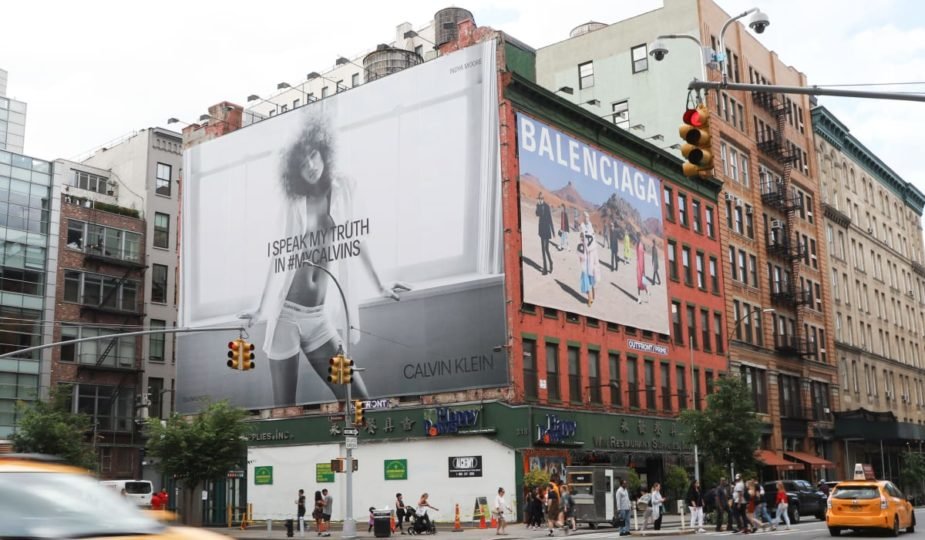
Get Creative with San Francisco Billboards
One of the world’s leading digital meccas is Silicon Valley, quickly followed by the San Francisco Bay Area, the United States’ biggest high-tech manufacturing center. In this region, audiences are diverse, urban, affluent, highly educated, and highly attentive. Many in the tech startup industry have recognized that in order to get their attention, the best way to do so is to make use of the outdoors.
In Silicon Valley, making use of outdoor advertising areas provides those in the tech startup industry the ability to create an integrated and targeted platform meant to connect budding companies to their desired audiences. In marketing, most agree that building big canvases doesn’t simply get you noticed. Rather, it is key if you hope to drive engagement and build trust with your audience.
By using billboards and other outdoor media, not only are you able to reach your audience immediately and where they are, but once they have repetitive exposure to your brand and products, that information will better stick in their minds. In places like San Francisco, San Francisco billboards create an excellent opportunity for startups to find new customers, build their brand, and grow their businesses.
Tech Companies and Silicon Valley Startups
New statistics are indicating that most tech companies – as in the case of Google, Facebook, and Apple – tend to spend their marketing dollars in a different manner. This is because even with incredible access to digital marketing, this arena is quickly becoming a very cramped space. As a result, many companies are turning back to using a traditional marketing medium – namely billboards – in order to advertise progressive products and concepts.
For these many tech brands, making use of outdoor media presents them with a unique opportunity to make use of large outdoor creative canvases in the real world that immediately reach consumers – and do so in a more impactful way than the small screens where consumers mostly do their business.
Interestingly, this turn toward outdoor marketing spaces isn’t just an arena that is being maximized by major brands. In fact, many startup businesses are also turning to billboards to help spread the word about their branding identity and products, as well as to generate a direct connection to their consumers.
Statistics indicate that many of these startup companies are skipping digitally native advertisements altogether. For example, Eaze, a cannabis delivery company, turned to the outdoors simply because the company couldn’t advertise online (due to restrictions and regulations) and therefore had no other choice. By using (and in many ways saturating) outdoor space, Eaze immediately became visible to its consumers.
Statistics show that well many believe that billboards are too traditional a marketing strategy; for many startup organizations making use of billboards can actually legitimize your brand, improve your brand’s overall reputation, generate a positive emotional bond with your customers, and increase the level of authenticity that company will have in the eyes of their consumers.
Billboards in San Francisco
All across Silicon Valley, brands are visible on the roadways, major highways, intersections, and integral choke points through the use of billboards. Not only can the strategy introduce your company and its offerings to key customer bases, but it can also establish a direct connection to your consumers in the places that they are at.

The key to maximizing the power of your billboard is to think about a topic such as visibility, the length of its presence, the targeted market and demographic, and the preferred location for your branding materials. In a city with a population of over 800,000 people, giving a lot of thought to these questions can mean the difference in terms of the kinds of impact your billboards will have.
Airport Media
A great location to make use of in the arena of outdoor advertising is an area that is known to be a major transit hub – that is, the San Francisco (SFO) International Airport. Not only does this airport have four terminals and seven concourses, but it is highly trafficked and busy. This means that you can get your ads and brand offerings in front of a fairly large audience of travelers – and potentially a growing customer base.
Transit Advertising
Another great outdoor space to convey your branding identity and offerings is transit. In the city of San Francisco, nearly 21 million transit riders use this service a month – many of whom are often commuting in and out of Silicon Valley. Considered one of the largest bus and rail networks in the United States, this transit system provides its riders with a mobile canvas and unbeatable eye-level transit media in its busses, rail, and parking garage areas. This is ideal for marketers who are interested in creating traffic-stopping moments and deep market penetration.
Street Marketing
Another great outdoor marketing option is street-level marketing. Like many of the largest cities in the United States, many of the residents in Silicon Valley use public transportation or opt to walk or bike to work. As a result, businesses that are interested in getting noticed can also opt to showcase their brand identity and offerings in heavily-trafficked areas. These might include major public transportation arteries, shopping districts, and downtown cores where customers are surrounded by busy streets. In these spaces, marketers have a perfect opportunity to generate advertisements that are eye-level, eye-catching, and have the maximum level of exposure.
Highway 101
Finally, another great marketing option is the highway. For example, highway 101 is perhaps the best example of a busy space where tech companies have mastered how to tailor their messages to their target audience. That said, to stand out in this space – a space that is often highly congested – your company will need to create ad material that is highly creative and piques the interest of drivers, does not alienate your audience, and speaks directly to your consumers.









